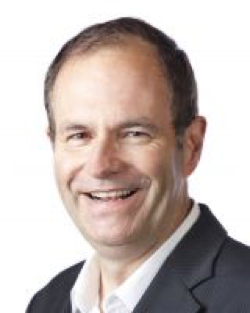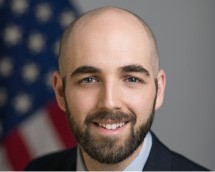Topic intro description here. Limited to 145 characters. Topic intro description here. Limited to 145 characters. Topic intro description here.
Understanding HL7® FHIR® for Non-Technical Healthcare Executives
The purpose of this presentation is to help non-technical healthcare executives (financial, clinical and policy) understand the value of HL7 FHIR®; and support the adoption of HL7 FHIR® and DaVinci by providers and payers.
Applications of Blockchain Technology for Data-Sharing in Oncology: Results from a Systematic Literature Review
Applications of Blockchain Technology for Data-Sharing in Oncology: Results from a Systematic Literature Review
Timely sharing of electronic health records across providers, while ensuring data security and privacy, is essential for prompt care of cancer patients, as well as for the development of medical research and the enhancement of personalized medicine. Yet, it is not trivial to achieve efficient consent management, data exchange, and access-control policy enforcement, in particular, in decentralized settings, and given the gravity of the condition such as cancer. Using blockchain technology (BCT) has been recently advocated by research communities and gained momentum from the industry perspective. However, most of the proposed solutions are at the level of a prototype, and blockchain-based healthcare data management systems are not in place yet.
This paper presents a systematic literature review, aiming to analyze the motivations, advantages, and limitations, as well as barriers and future challenges faced when applying the state-of-the-art distributed ledger technology in oncology. We then discuss its outcomes and propose the direction of the future research that can help to attain integration and adoption of the BCT for data-sharing, medical research, and the pharmaceutical supply chain in oncology, as well as in healthcare in general.
BCT has the potential to enhance data-sharing (for primary care and medical research), as well as to attain optimization of the pharmaceutical supply chain by bringing properties such as transparency, traceability, and immutability to the applications. However, BCT itself cannot guarantee data privacy and security. Thus, it is never proposed as a stand-alone technology, but as a combined technology with cryptographic techniques. Regardless of the number of existing prototypes of blockchain-based healthcare systems, due to the existing barriers of the adoption (e.g., legal, social, and technological limitations), there is a lack of evaluation in real-world settings. Aiming to overcome these limitations, we propose future research directions that include design of the privacy-preserving hybrid data storage, interoperable infrastructures and architecture, and are compliant with the international laws and regulations.
The full article can be downloaded below.
Anthem Will Use Blockchain To Secure Medical Data For Its 40 Million Members In Three Years
Anthem Will Use Blockchain To Secure Medical Data For Its 40 Million Members In Three Years
Anthem, the second-largest health insurance company in the U.S, has started to use blockchain technology to help patients securely access and share their medical data. The company plans to roll out the feature, which is in pilot testing now, to groups of members in the next few months. All 40 million members will have access to it in the next two to three years, according to company officials.
“What blockchain potentially gives us the opportunity to do is not worry about those trust issues,” said Anthem CEO Gail Boudreaux at the 8th Annual Forbes Healthcare Summit in New York last week. “We have an opportunity now to share data that people can make their own decisions on.
The full Forbes article can be viewed at this link.
Here’s How Health Data Can Help Stem the Opioid Crisis
Here’s How Health Data Can Help Stem the Opioid Crisis
The number of people losing their lives each day to prescription or illicit opioid-related overdoses is staggering. According to the Centers for Disease Control and Prevention, more than 47,000 Americans died in 2017 — 130 fatalities each day — due to opioid overdoses, making it the deadliest year on record.
You don’t have to be personally touched by the opioid crisis to understand the gravity of the statistics, let alone the immeasurable and lasting impact it is having on society. This can be addressed by better harnessing the power of data to stem this crisis.
The full Morning Consult article can be viewed at this link.
Top 8 Predictions That Will Disrupt Healthcare in 2020
Top 8 Predictions That Will Disrupt Healthcare in 2020
Every year, our team of futurists, analysts, and consultants at Frost & Sullivan's Transformational Healthcare Group comes together to brainstorm and predict the themes, technologies, and global forces that will define the next 12 to 18 months for the healthcare industry. We also retrospect how we did each year, and each year we are becoming more accurate in the predictions we make. For the 2019 predictions that were released in November 2018, six out of eight predictions realized as anticipated, while the two remaining predictions have not panned out exactly the way we thought.
The new vision for healthcare for 2020 and beyond will not just focus on access, quality, and affordability but also on predictive, preventive, and outcome-based care models promoting social and financial inclusion. As we are on the verge of entering a new decade of change globally, 2020 will be a reality check for long-pending national healthcare policies and regulatory reforms that must reinvigorate future strategies. China will continue to catch up to the US on some important health metrics as it strives to become the “world’s best and cheapest health system.”
The top 8 predictions for 2020 are as follows:
- SDOH analytics platform gains traction during 2020
- AI develops more use cases and faces more ethical challenges, beginning with radiology
- Annuity-based model to catapult gene therapy commercialization
- Continued VC funding mega-rounds make 2020 a banner year for Digital Health Unicorns’ IPO exits
- Interoperability by pure-play solution vendors will gain ground against standalone systems
- Telehealth will gain mainstream adoption in the overall mix of healthcare services and will expand beyond the current focus on chronic conditions
- Precision medicine-led approaches will pave the way for next-gen health data analytics solutions
- 2020 will be a year of ‘Retailization’ for the healthcare industry, promoting the ‘Comparison Shopping’ consumer mindset
The full Forbes article can be viewed at this link.
Will Artificial Intelligence Translate Big Data Into Improved Medical Care or Be a Source of Confusing Intrusion? A Discussion Between a Physician Informatician and a Medical Informatics Researcher
Will Artificial Intelligence Translate Big Data Into Improved Medical Care or Be a Source of Confusing Intrusion? A Discussion Between a Physician Informatician and a Medical Informatics Researcher
Artificial intelligence (AI), the computerized capability of doing tasks, which until recently was thought to be the exclusive domain of human intelligence, has demonstrated great strides in the past decade. The abilities to play games, provide piloting for an automobile, and respond to spoken language are remarkable successes. How are the challenges and opportunities of medicine different from these challenges and how can we best apply these data-driven techniques to patient care and outcomes? A New England Journal of Medicine paper published in 1980 suggested that more well-defined “specialized” tasks of medical care were more amenable to computer assistance, while the breadth of approach required for defining a problem and narrowing down the problem space was less so, and perhaps, unachievable. On the other hand, one can argue that the modern version of AI, which uses data-driven approaches, will be the most useful in tackling tasks such as outcome prediction that are often difficult for clinicians and patients. The ability today to collect large volumes of data about a single individual (eg, through a wearable device) and the accumulation of large datasets about multiple persons receiving medical care has the potential to apply to the care of individuals. As these techniques of analysis, enumeration, aggregation, and presentation are brought to bear in medicine, the question arises as to their utility and applicability in that domain. Early efforts in decision support were found to be helpful; as the systems proliferated, later experiences have shown difficulties such as alert fatigue and physician burnout becoming more prevalent. Will something similar arise from data-driven predictions? Will empowering patients by equipping them with information gained from data analysis help? Patients, providers, technology, and policymakers each have a role to play in the development and utilization of AI in medicine. Some of the challenges, opportunities, and tradeoffs implicit here are presented as a dialog between a clinician (SJN) and an informatician (QZT).
The full article can be downloaded below.
Data exchanges based on blockchain in m-Health applications
Data exchanges based on blockchain in m-Health applications
The most important aspect of handling data in the healthcare industry is its seamless and secure transition across intercepting nodes. Effective elimination of third-party entities and ensuring direct links between patient and healthcare provider can result in the transmission of error-free, unduplicated data. The use of blockchains can open up opportunities to counter the current requirements due to their ability to safely share information across nodes and networks from the access point and secure the safety of transactions. Currently, sharing medical data is observed to be slow, incomplete, insecure, and provider-centric. These shortcomings prevent data interoperability and are a consequence of lack of foundational, structural, and semantic inoperability. By applying the blockchain technologies with appropriate markers, the safety of patient data can be ensured during data transmission. This paper evaluates the potential use of blockchain technology in association with mobile-based healthcare applications.
The full article can be downloaded below.
AMIA encourages NIH to fund FHIR for interoperability and clinical research
AMIA encourages NIH to fund FHIR for interoperability and clinical research
The National Institutes of Health issued a request for information earlier this fall, seeking to learn more about how HL7's Fast Healthcare Interoperability Resources specification can be better used for clinical research. The American Medical Informatics Association has responded with some suggestions for how NIH can help develop and promote the FHIR standard.
AMIA notes that the data exchange standard – as well as the larger issue of interoperability across the healthcare world – is in need of funding and research. And the informatics group has asked NIH to directly support FHIR research in three different ways: through investment, education and product support.
The full Healthcare IT News article can be viewed at this link.
Electronic Medical Records, Burnout, And “Man’s 4th Best Hospital”
Electronic Medical Records, Burnout, And “Man’s 4th Best Hospital”
Graduating from medical school in 1978, I started my hellish internship while reading Samuel Shem’s classic, “The House of G-d,” a scathing indictment of medical education and the mercenary incentives in patient care. I found it shocking, crude at times and disillusioning—but at its core, absolutely correct about what was happening in medicine that was so wrong.
Thus it seems fitting that I received a review copy of Shem’s new book, “Man’s 4th Best Hospital,” as my medical career is coming to a close. Once again, Shem nails where medical care has lost its way. Physician “burnout” and dissatisfaction are increasing in step with patients’ unhappiness.
Much of the blame can be attributed to two things—corporate greed and electronic medical records, which are like conjoined twins. There’s no small irony that this is what is forcing many experienced physicians, like myself, out of practice prematurely, contributing to a waste of both talent and experience that is needless and costly.
The full Forbes article can be viewed at this link.
Webinar Presentation - Connecting Communities: HIEs and Social Determinants of Health
Slides and presentation from the 11.7.19 webinar
The vast majority of U.S. healthcare dollars and patient care efforts are currently spent on clinical factors and are not addressing the underlying socioeconomic and behavioral factors that greatly impact patient health. These forces, referred to as social determinants of health (SDOH), give providers and health plans meaningful insights into the health of their patient populations. SDOH data, which includes information on housing, income, crime, education, transportation, domestic circumstances, and food insecurity, allows stakeholders to proactively identify and treat those most at risk. SDOH improves both patient and population health by contributing to the complete picture of an individual, identifying populations that are most vulnerable, and facilitating connections with social services and programs that can improve their lives.
This webinar explores:
- SDOH data sources and use across organizations
- Center for Medicare & Medicaid Services (CMS) efforts regarding the use of SDOH
- The role of health information exchanges (HIEs) with SDOH data, including challenges and solutions
SPEAKERS
 Leonides (Lizzy) Feliciano, Vice President, Marketing, LexisNexis Health Care
Leonides (Lizzy) Feliciano, Vice President, Marketing, LexisNexis Health Care
Lizzy brings more than 20 years of HIT marketing experience to LexisNexis Risk Solutions. In her role she is responsible for creating strategies to grow the LexisNexis brand, drive thought leadership and establish innovation-centric messaging frameworks for a broad portfolio of data insights solutions. She has experience working with data, technology, and analytics organizations that deliver solutions impacting patient outcomes, data quality and interoperability. Lizzy holds a BA in Organizational Communication with a minor in Public Relations from Rollins College, and a MBA with a double concentration in Business Management and Marketing from the Crummer Graduate School of Business located in Winter Park, FL.
 Chris Hobson, MD, Chief Medical Officer, Orion Health
Chris Hobson, MD, Chief Medical Officer, Orion Health
Dr. Chris Hobson has global experience in the development implementation and adoption of Health Information Exchange, population health solutions, disease management programs, and innovative value-based models of healthcare delivery. He has over twenty years’ experience in North America, Europe, Middle East and the Asia Pacific region always working in the broad population health space. Prior to joining Orion Health, he developed integrated care strategic projects for a major health system, over three years, in Auckland New Zealand and worked in primary care and internal medicine as a physician for more than ten years. He has broad and deep experience across all areas of Health Information Exchange from business and clinical strategy through product design and development; sales and marketing; implementation, project management and evaluation of health IT projects. Most recently he has been working closely with LexisNexis on ways of integrating SDOH into Health Information Exchange for provider and payor focused HIEs.
 Jordan Luke, M.A.Ec., Director, Program Alignment and Partner Engagement Group, CMS OMH
Jordan Luke, M.A.Ec., Director, Program Alignment and Partner Engagement Group, CMS OMH
Jordan Luke is the Director of the Program Alignment and Partner Engagement Group (PAPEG) at the CMS Office of Minority Health (CMS OMH). PAPEG is responsible for working across CMS programs, policies, models, and demonstrations to ensure that the needs of vulnerable populations are met. He leads the CMS Equity Plan for Improving Quality in Medicare and the Minority Research Grant Program. PAPEG also provides Health Equity Technical Assistance to organizations interested in embedding equity into their policies, programs, and initiatives. Jordan gained cross-cultural experience from living and working abroad for fifteen years in Chile, Mexico, Bolivia, Canada, and the Navajo Nation. Jordan completed his M.A. in Economics from Boston University and B.A. in Psychology from Lee University. His passion for equity was ignited as an undergraduate student, where he led a student group called Deaf Outreach and founded an LGBT group to support sexual and gender minority students. Jordan is a native Spanish speaker and knows intermediate American Sign Language (ASL).
